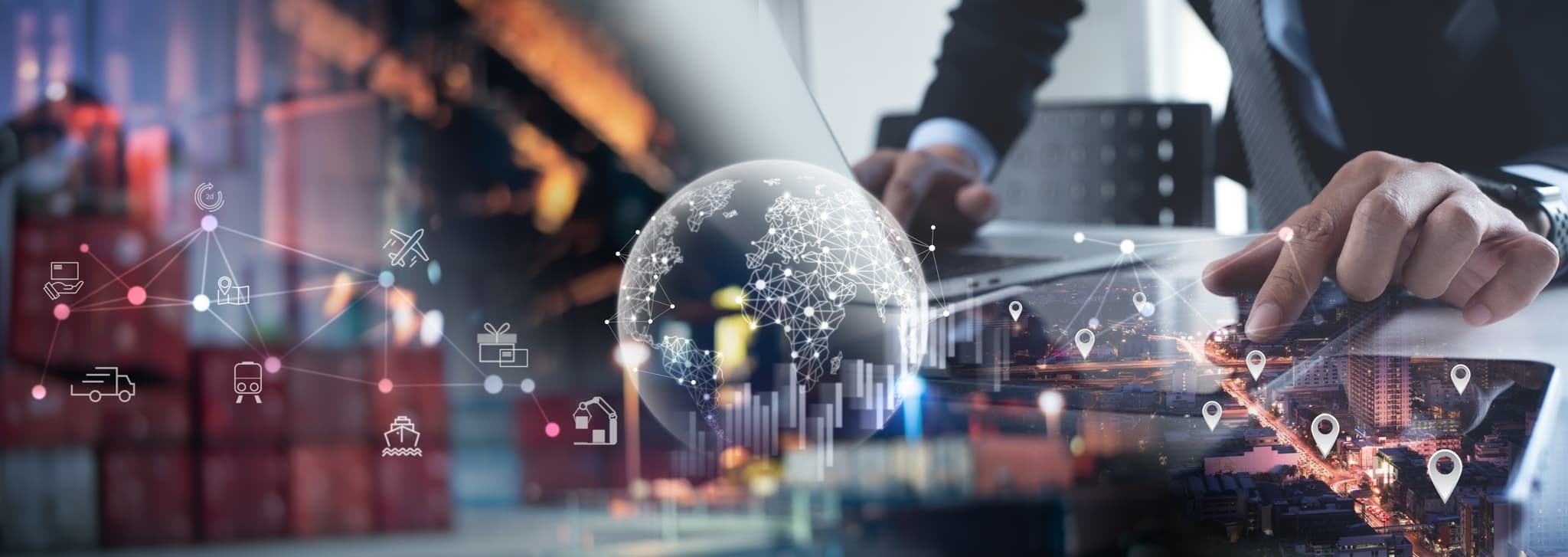Discover how cloud infrastructure enables modern business systems, and learn how Orderful uses it to deliver fast, reliable cloud-based EDI connectivity.
Transportation teams depend on electronic data interchange (EDI) to keep shipments moving, partners informed, and payments flowing. But when it’s time to upgrade or replace your transportation management system (TMS), those EDI connections often break, sometimes without warning.
EDI and TMS systems are tightly intertwined. Everything from tendering a load to confirming delivery relies on structured, automated data flows between shippers, carriers, and brokers. When a TMS system is swapped out or reconfigured without an EDI continuity plan, the result is often delays, chargebacks, or failed deliveries, which can damage partner relationships.
This guide explains how to maintain control of your EDI environment during a TMS migration and how a well-planned TMS strategy can support EDI without disruption.
Why EDI Matters in Transportation Management
EDI is the backbone of modern transportation operations. From load tenders and shipment updates to delivery confirmations and freight invoices, EDI enables real-time, structured communication between trading partners across the supply chain. When transportation data moves smoothly between systems, so do the trucks, railcars, and containers that carry your goods.
Carriers, shippers, brokers, and third-party logistics (3PL) providers all depend on accurate, timely EDI data to plan routes, confirm pickups, monitor exceptions, and complete deliveries. A single missing or unreadable EDI message can trigger delays, missed appointments, or rejected shipments.
For high-volume transportation environments, like ecommerce fulfillment, even small disruptions can cascade into larger issues downstream. Missed delivery windows can lead to chargebacks or strained relationships with partners and customers. Avoiding chargebacks and maintaining smooth operations starts with keeping your EDI connections reliable.
What Is TMS EDI Integration?
TMS EDI integration refers to the connection between a transportation management system (TMS) and your electronic data interchange (EDI) infrastructure. This integration allows for the automated exchange of transportation data between your internal systems and external trading partners.
In a typical transportation workflow, EDI facilitates key document exchanges like:
EDI 204: Load tender
EDI 990: Carrier response
EDI 214: Shipment status update
EDI 210: Freight invoice
With EDI integrated into your TMS, these documents can move between systems instantly and accurately, without manual data entry or file uploads. That means better coordination, fewer delays, and more reliable data exchange across the transportation management process.
Unfortunately, some TMS platforms make EDI connectivity more difficult than it should be. The complexity of transportation EDI often stems from outdated protocols, brittle connections, or limited visibility into message failures, all of which can be remedied by a system upgrade.
Why EDI Fails During TMS Migrations
Because TMS and EDI systems are deeply connected, even minor mismatches between the two systems can lead to costly disruptions.
EDI issues during a TMS migration can usually be traced back to one of these root causes:
Mapping mismatches: Every TMS platform structures its data differently. Without precise mapping between new and existing fields, critical information can be dropped or misrouted.
Legacy protocol issues: Older EDI connections often rely on protocols like FTP or AS2. If the new TMS doesn’t support those methods or supports them differently, message delivery can fail entirely.
Re-onboarding requirements: Some organizations are forced to re-onboard all trading partners when switching systems.
Limited testing environments: Migration teams often lack a staging environment that accurately mirrors production, making it more challenging to identify issues before going live.
These problems are especially common for companies running homegrown systems, heavily customized platforms, or brittle integrations built years ago. As with ERP transitions, a TMS upgrade should include a clear continuity plan for EDI connections.
Tips for a successful ERP migration can offer valuable insights here. Many of the same risks apply when upgrading transportation platforms.
TMS Migration EDI Risk Matrix
EDI Risk During TMS Migration | Cause | Potential Impact | Prevention Tip |
|---|---|---|---|
Mapping mismatches | Data field inconsistencies | Failed messages, incorrect routing | Define mappings early |
Legacy protocol issues | Outdated FTP/AS2 dependencies | Dropped or delayed messages | Use a platform with multi-protocol support |
Re-onboarding trading partners | New system not decoupled from EDI | Onboarding delays, lost partners | Choose API-first EDI architecture |
No staging/test environment | Lack of sandbox simulation | Undetected errors go live | Set up a mirrored testing environment |
Limited partner communication | Poor migration planning | Missed updates, rejected docs | Notify partners early and provide timelines |
Benefits of a Seamless TMS and EDI System
When EDI and TMS systems work together seamlessly, transportation operations become faster, more accurate, and far easier to scale. Manual data entry and one-off document transfers give way to real-time data flows and automation. This frees up your teams to focus on higher-value work.
A well-integrated system unlocks several benefits, including:
Real-time shipment visibility: Status updates, delivery confirmations, and exceptions are shared instantly across systems, reducing the need for follow-ups or manual tracking.
Fewer manual touches: Automating EDI data flow improves data accuracy and reduces the risk of errors, from duplicate entries to missed deliveries.
Faster freight reconciliation: Aligned invoices and shipment updates let accounting teams close out loads and issue payments faster.
Streamlined onboarding: New trading partners can be added quickly, without reworking your entire integration stack. A seamless connection accelerates EDI onboarding and helps scale transportation partnerships.
Ultimately, seamless integration means a transportation team that can respond to changes in real time, rather than after the fact.
How to Maintain EDI Continuity During a TMS Upgrade
The key to a smooth TMS transition is making sure your EDI doesn’t get left behind. Too often, migration teams focus on UI, routing logic, or carrier performance, only to discover too late that critical EDI flows are broken or misaligned.
To avoid that outcome, build your upgrade around these core steps:
Audit your current EDI landscape. Start by identifying all existing EDI flows and documents tied to your TMS, including load tenders, shipment status updates, and invoices.
Define data mapping early. Know how your new TMS structures data and how that maps to your existing EDI formats. This reduces the chance of mismatched fields or data loss midstream.
Set up a testing environment. Use a staging environment that mirrors production to validate message flows, run simulations, and catch issues before they go live.
Coordinate with trading partners. Clearly communicate your migration timeline and requirements to partners, allowing them to align their systems or expectations as needed.
Build a rollback plan. Even with the most careful preparation, surprises can happen. A documented fallback strategy gives you room to revert or reprocess messages without disrupting the supply chain.
In many cases, TMS upgrades are part of a broader enterprise application integration effort. That makes EDI continuity even more critical.
What to Look For in a Modern TMS EDI Solution
Legacy systems often require manual intervention, offer limited visibility, or make it difficult and time-consuming to onboard new trading partners. Whether you're upgrading your TMS or just trying to future-proof your EDI, it’s worth knowing what to prioritize.
Look for a modern EDI platform that offers:
Support for multiple protocols and formats: AS2, FTP, APIs, and standardized formats such as ANSI X12 should all be supported.
Cloud-native deployment: A cloud-based system offers better scalability, real-time monitoring, and fewer on-premise maintenance headaches.
Built-in data validation: Spot and fix errors before they cause failed transmissions or chargebacks.
Fast trading partner onboarding: New trading partner connections shouldn’t require custom development or extended lead times, especially under tight transportation deadlines.
Prebuilt TMS document flows: Templates for common documents, such as 204s and 210s, can shorten implementation time and improve reliability.
The right EDI system should simplify transportation workflows. If your team is also managing ERP changes, consider how your TMS and EDI tools will work with other core systems. A solution that can simplify ERP/EDI integration will reduce duplication and help you adapt faster as your tech stack evolves.
Orderful’s Approach to EDI and TMS Integration
Orderful’s integrated platform eliminates many of the pain points that come with traditional TMS EDI solutions. Whether you're migrating to a new system or optimizing an existing one, our approach is designed to keep your transportation data flowing without disruption.
With Orderful, you get:
Prebuilt TMS document flows for common transactions like 204, 210, and 214, so your team can move fast without starting from scratch.
Real-time transaction validation, helping you catch formatting or content errors before they reach your trading partners.
A modern, cloud-native platform with support for AS2, APIs, and legacy protocols, and flexible enough to work with any TMS.
Rapid trading partner onboarding, thanks to an extensive network of carriers, 3PLs, and warehouse management system (WMS) integrations, and an interface that transforms partner onboarding from weeks to days.
Orderful also decouples your EDI from your TMS. With an API-first model, your systems no longer need to be inextricably woven together. This gives you the freedom to upgrade systems without re-onboarding every partner or rewriting every flow. That means less downtime, fewer headaches, and a smoother path to scale.
Keep Transportation Data Flowing, No Matter Your TMS
Upgrading or replacing your transportation management system is a smart move. But you want to be sure it doesn't break the EDI workflows that keep your supply chain running. Delays, chargebacks, and lost visibility often stem from one overlooked factor: integration.
The good news is that you don’t have to choose between modernizing your TMS and maintaining EDI reliability. With the right integration strategy, you can streamline transportation operations, adapt faster to change, and scale with confidence.
Orderful’s Integrated platform helps you build resilience into your data workflows. Whether you’re switching systems or fine-tuning existing ones, your EDI connections stay strong. Talk to our team about EDI resilience during your TMS transition.
- 01Why EDI Matters in Transportation Management
- 02What Is TMS EDI Integration?
- 03Why EDI Fails During TMS Migrations
- 04Benefits of a Seamless TMS and EDI System
- 05What to Look For in a Modern TMS EDI Solution
- 06Orderful’s Approach to EDI and TMS Integration
- 07Keep Transportation Data Flowing, No Matter Your TMS

